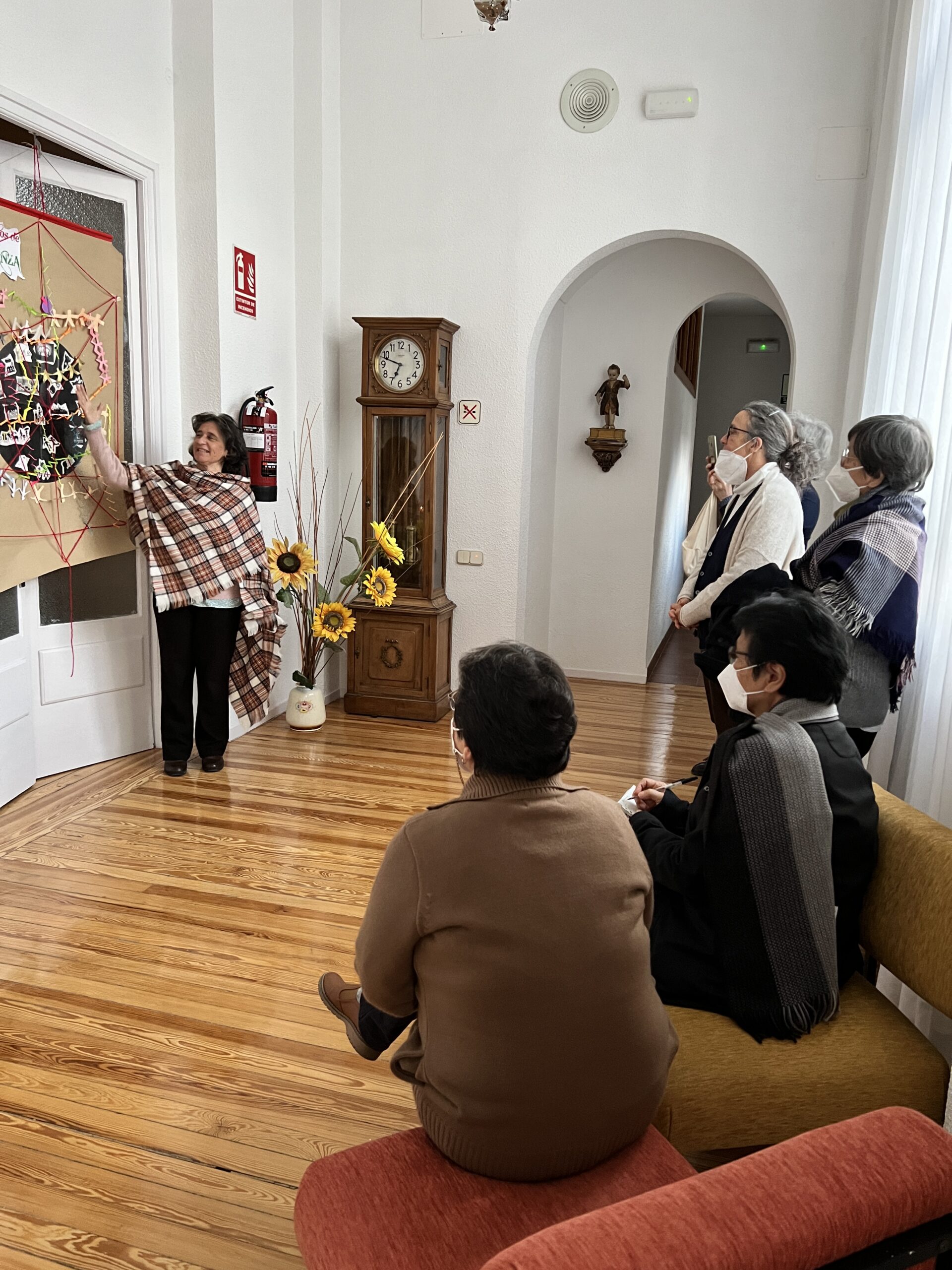
15 Feb GC XXI. DOING ALL FOR LIFE, PLACING THE PERSON AT THE CENTER
Today we began by sharing in a very creative way the theme of yesterday’s talk “SEEKERS REACHED AND PROVOKED BY HOPE”. All this richness was contemplated in the heart of each sister and captured in an explosion of creativity on sketches of hope that were displayed in the rooms for all of us to enjoy and by which to be inspired.
We then moved onto the panel: “Educating is an act of hope” with several interventions. Juan Jairo Laverde, Director of the school in Bogotá and member of the ACI Family, spoke about the involvement of families in educational centers. S. Bindu Michael (India) shared on the training of teachers for special education. Euphasie Konde (Congo-Cameroon) focused on “Educating in the care of the common home”. Loreto Sáenz de Buruaga, Coordinator of the Pedagogical Area of the ACI Educational Foundation, explained the approach of “putting the student at the center of the educational task”.
To conclude the morning session, we welcomed Carlos Askunze Elizaga from the REAS Euskadi team, an expert in the field of a social economy of solidarity. He belongs to the Piarist fraternity with a broad social and ecclesial commitment. He gave us a broad vision of the social economy of solidarity, which cares for life and is at the service of life, introducing us to platforms and networks for the exchange between entities, projects in networks that are based on the values of solidarity and fair trade, as well as many possibilities for ethical investments. It was innovative and inspires us to rethink our way of managing our economy in our communities.
Sr. Nurya Martínez-Gayol returned this afternoon to speak with us about “Reparative Dialogue.” To enter into dialogue is more than a conversation, a chat, or an exchange of opinions. Like the experience of the disciples on the road to Emmaus, to enter into dialogue is to journey together towards a newness or a reality that is yet unknown, unscripted. It requires that the participants empty themselves of preconceived notions and humbly make room for the “other”, listening empathetically to and dialoguing from the wounds of life as well as its joys. This kind of listening requires true hope…trust in God’s communication through the “other”, hope that the way will be made apparent with and through the other. To believe, as Nurya reminded us, is to see that which comes forth from hearing. It is a risk to dialogue, but God precedes us in risking a dialogue with humanity. After the presentation, all of us were left with the concern of how to transmit what we are living, processing and discerning here in the General Congregation in the form of a “restorative dialogue” with the rest of the Congregation, opening space to continue dialoguing and contributing…
We continue with the “Nights of Hope”. This time we traveled to Argentina-Uruguay and to the Philippines.
S. Ángeles Martin and S. Francia Opiana (Philippines) shared with us the responses to the climatic emergencies in the Philippines in recent years. The Philippines is an archipelago of about 7500 islands and, being located in the “ring of fire” and surrounded by the Pacific Ocean that is aggravated by climatic changes, it is frequently affected by typhoons, volcanic eruptions, earthquakes and tropical cyclones. These have dramatic effects on the population, especially the poorest. We need to respond as immediately as possible, networking with other institutions, volunteers, religious, parents of our centers, all united in solidarity.
Sisters Inés Greslebin and Camila Basombrío (Argentina-Uruguayan) spoke to us about the solidarity economy projects they have been carrying out over the last few years, both with women in Santiago del Estero and with immigrant women from Venezuela, who, despite having professional careers and a great desire to work, need to stay at home in order to take care of their children. The closeness to the reality of the people and an active hope have allowed them to discover their own resources and the possibility of transformation and local production. The “Ninashpa” ceramics project, the family gardens, and a project that uses wool and leather from sheep, transforming them into marketable products with the help of local artisans and trainers, are three beautiful examples of this intervention from below and with the people, in our commitment to a social economy of solidarity.
Once again, we feel how the mission of each region and province moves and inspires us to continue “involving and complicating ourselves” in the service of our poorest brothers and sisters, wherever we are and with all the creativity and audacity we can.

